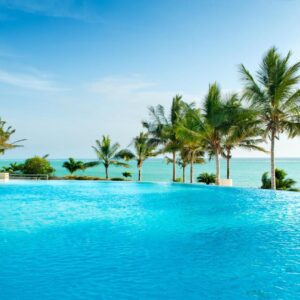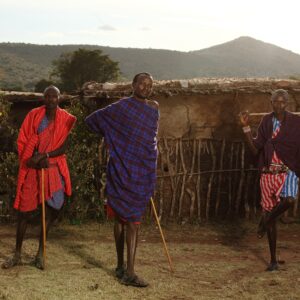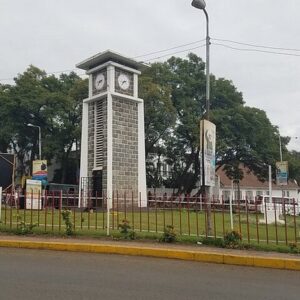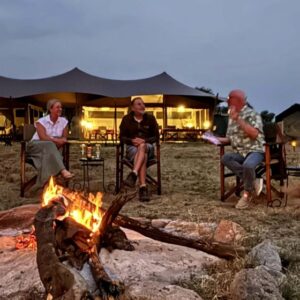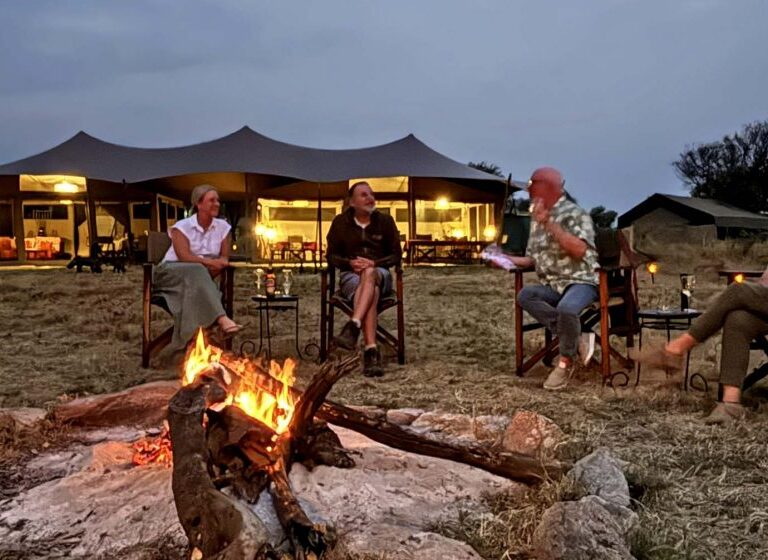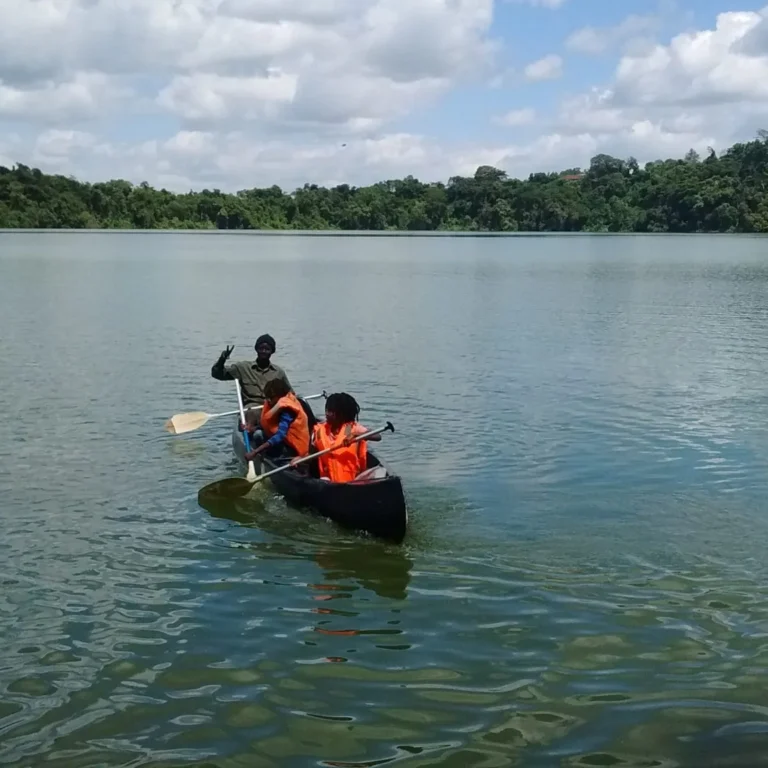Best Time To Visit Ngorongoro Crater (Month By Month)
Embarking on a safari adventure in the mesmerizing Ngorongoro Crater is an experience that will leave you in awe of nature’s wonders. The Ngorongoro Crater, located in Tanzania, is a UNESCO World Heritage Site and one of the most spectacular natural landscapes on our planet. It is home to a diverse array of wildlife, breathtaking vistas, and a rich cultural heritage. If you’re planning a safari to this remarkable destination, timing your visit right can enhance your experience significantly. In this comprehensive guide, we will delve into the best time of year for an Ngorongoro Crater safari, ensuring you make the most of your journey.
Understanding the Seasons
The Ngorongoro Crater experiences distinct seasons that influence the wildlife, climate, and overall safari experience. To determine the ideal time to visit, it’s crucial to comprehend these seasons and their unique characteristics.
Dry Season (June to October)
The dry season is widely regarded as the best time for a safari in the Ngorongoro Crater. Running from June to October, this period offers fantastic wildlife sightings, comfortable weather, and clear skies. As the dry season progresses, vegetation thins out, making it easier to spot elusive animals against the backdrop of the crater’s stunning landscapes. Moreover, the scarcity of water sources during this time attracts animals to the remaining watering holes, ensuring a higher concentration of wildlife sightings.
Wet Season (November to May)
While the wet season in the Ngorongoro Crater may not be as popular as the dry season, it still presents unique opportunities for intrepid travelers. From November to May, rainfall rejuvenates the landscapes, transforming the crater into a lush oasis. This period is marked by vibrant vegetation, blooming flowers, and an abundance of birdlife. Although wildlife may be more dispersed during the wet season due to the availability of water throughout the crater, it’s still possible to witness remarkable animal encounters in this picturesque setting.
Wildlife Encounters
One of the main highlights of an Ngorongoro Crater safari is the unparalleled wildlife encounters it offers. The region is teeming with a remarkable array of species, including the iconic African Big Five—lion, leopard, buffalo, elephant, and rhinoceros. Understanding the seasonal movements of these majestic creatures can further enhance your safari experience.
Dry Season Wildlife
During the dry season, the Ngorongoro Crater becomes a haven for wildlife enthusiasts. The scarcity of water forces animals to congregate around the remaining watering holes, leading to extraordinary wildlife sightings. You can witness large herds of wildebeest, zebra, and gazelle as they migrate across the vast plains in search of water and fresh grazing. Predators, such as lions and cheetahs, take advantage of this migration, providing a thrilling spectacle of predator-prey interactions.
Wet Season Wildlife
In the wet season, the Ngorongoro Crater undergoes a remarkable transformation. The abundant rainfall revitalizes the landscapes, attracting a myriad of herbivores to graze on the lush vegetation. This, in turn, lures predators, creating a captivating dance of life and survival. Birdwatchers will also be delighted during this time, as the crater becomes a sanctuary for numerous bird species, including flamingos, eagles, and storks.
Climate and Weather
The Ngorongoro Crater’s climate is relatively mild and pleasant throughout the year, thanks to its elevated location. However, variations in weather patterns can impact your safari experience, making it essential to consider the climate when planning your visit.
During the dry season, the Ngorongoro Crater experiences mild and pleasant weather conditions. Days are typically warm and sunny, with temperatures averaging around 70 to 80 degrees Fahrenheit (21 to 27 degrees Celsius). Evenings and early mornings can be cooler, so it’s advisable to bring layers of clothing to stay comfortable throughout the day. The dry season is characterized by clear skies, allowing for uninterrupted panoramic views of the crater and its inhabitants.
Wet Season Climate
The wet season in the Ngorongoro Crater brings refreshing rains that nourish the landscapes and support the diverse ecosystem. While rainfall is more frequent during this time, it often occurs in short bursts rather than prolonged downpours. The temperatures remain relatively warm, with daytime temperatures ranging from 70 to 85 degrees Fahrenheit (21 to 29 degrees Celsius). It\’s important to note that road conditions within the crater can become more challenging during the wet season, as some tracks may become muddy or slippery. However, experienced safari guides and drivers are adept at navigating these conditions safely best time to visit Ngorongoro Crater .
Choosing the Best Time
Now that we’ve explored the characteristics of each season, let’s determine the best time for your Ngorongoro Crater safari based on your preferences and interests. When is the best time to visit the Ngorongoro Crater? The best time to visit the Ngorongoro Crater in Tanzania is during the April to May rainy season. There are far fewer visitors this time of the year, and the crater is wonderfully lush and green compared to the dusty dry-season landscape.
Optimal Wildlife Viewing
If your primary goal is to witness an abundance of wildlife in close proximity, the dry season (June to October) is the ideal time to plan your safari. The limited water sources attract a high concentration of animals, leading to exceptional game viewing opportunities. You’ll have the chance to witness predators in action as they hunt their prey, and witness the awe-inspiring wildebeest migration, a spectacle of nature that unfolds before your eyes.
Lush Landscapes and Birdlife
For those who appreciate the beauty of flourishing vegetation and vibrant birdlife, the wet season (November to May) offers a different but equally enchanting experience. The Ngorongoro Crater is transformed into a verdant paradise, adorned with blooming flowers and teeming with bird species. The breathtaking landscapes, coupled with the diverse birdlife, present countless opportunities for photography and appreciation of nature’s wonders.
Other Considerations
In addition to the wildlife, climate, and weather, there are a few more factors to consider when planning your Ngorongoro Crater safari:
Crowd Levels
The dry season is generally more popular among tourists due to the optimal wildlife sightings. As a result, the Ngorongoro Crater may be more crowded during this period. If you prefer a quieter and more intimate safari experience, you may consider visiting during the wet season when visitor numbers are lower.
Budget
Accommodation rates and safari prices can vary throughout the year. The high season, corresponding to the dry season, often sees higher prices due to the increased demand. If budget is a significant factor for you, exploring the wet season options might offer more affordable choices.
Personal Preferences
Ultimately, the best time to visit the Ngorongoro Crater depends on your personal preferences and what you hope to experience during your safari. Whether you prioritize wildlife encounters, lush landscapes, or a balance of both, there are unique opportunities to be found in each season.
FAQs about the Best Time of Year for an Ngorongoro Crater Safari
Planning a safari to the magnificent Ngorongoro Crater in Tanzania requires careful consideration, and you likely have questions about the best time to visit. To assist you in making an informed decision, we have compiled a list of frequently asked questions regarding the ideal timing for an unforgettable Ngorongoro Crater safari.
What makes the dry season the best time for a safari in the Ngorongoro Crater?
The dry season, which spans from June to October, offers numerous advantages for safari enthusiasts. The scarcity of water compels animals to gather around the remaining watering holes, resulting in exceptional wildlife sightings. The clear skies and thinner vegetation during this period enhance visibility, making it easier to spot elusive animals against the breathtaking backdrop of the crater.
Will I still see wildlife during the wet season?
Yes, you can still enjoy remarkable wildlife encounters during the wet season, which lasts from November to May. While the animal sightings may be more dispersed due to the availability of water sources throughout the crater, the lush landscapes and vibrant vegetation create a stunning setting for your safari adventure. Additionally, the wet season attracts a plethora of bird species, delighting birdwatchers with their colorful plumage and melodious calls.
How does the weather differ between the dry and wet seasons?
The dry season is characterized by warm and sunny days, with temperatures averaging around 70 to 80 degrees Fahrenheit (21 to 27 degrees Celsius). Mornings and evenings can be cooler, so layering your clothing is advisable. In contrast, the wet season experiences refreshing rains that rejuvenate the landscapes. Daytime temperatures range from 70 to 85 degrees Fahrenheit (21 to 29 degrees Celsius), offering pleasant safari conditions.
Is the Ngorongoro Crater crowded during the dry season?
The dry season is generally more popular among tourists due to the optimal wildlife sightings. As a result, the Ngorongoro Crater may experience higher visitor numbers during this period. If you prefer a quieter and more intimate safari experience, you may consider planning your visit during the wet season when crowd levels are typically lower.
Are there any budget considerations when planning a safari to the Ngorongoro Crater?
Accommodation rates and safari prices can vary throughout the year. The high season, which corresponds to the dry season, often sees higher prices due to the increased demand. If budget is a significant factor for you, exploring the wet season options might offer more affordable choices while still providing a remarkable safari experience.
Can I capture stunning photographs during my Ngorongoro Crater safari?
Absolutely! The Ngorongoro Crater presents endless opportunities for capturing breathtaking photographs. The diverse wildlife, picturesque landscapes, and dramatic lighting conditions make it a paradise for photography enthusiasts. Whether you visit during the dry season or the wet season, be sure to have your camera ready to immortalize the remarkable moments you encounter.
How can I maximize my Ngorongoro Safari experience regardless of the season?
Irrespective of the season you choose, there are a few tips to enhance your Ngorongoro Crater safari experience. First and foremost, book your safari with a reputable tour operator that provides knowledgeable guides and comfortable accommodations. Their expertise and experience will ensure that you make the most of your time in the crater. Additionally, be patient and observant during your game drives, as wildlife sightings can be unpredictable. Finally, immerse yourself in the unique culture of the region by engaging with the local Maasai community and learning about their traditional way of life. TripAdvisor Reviews.

